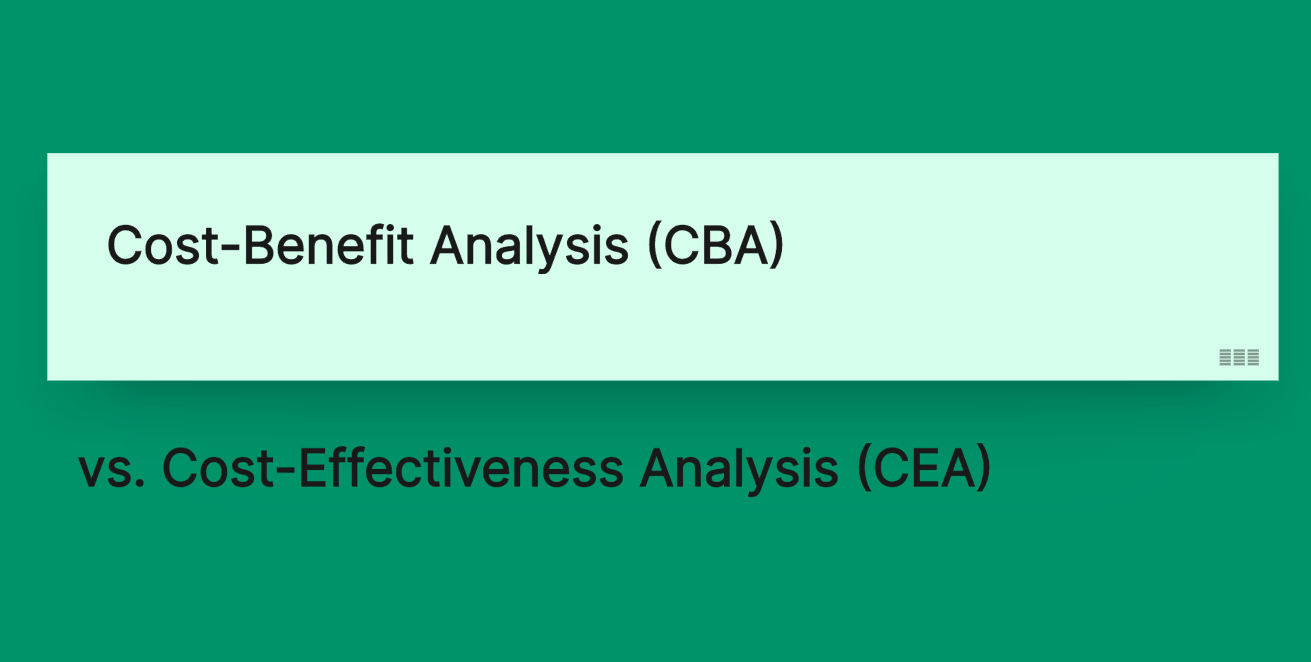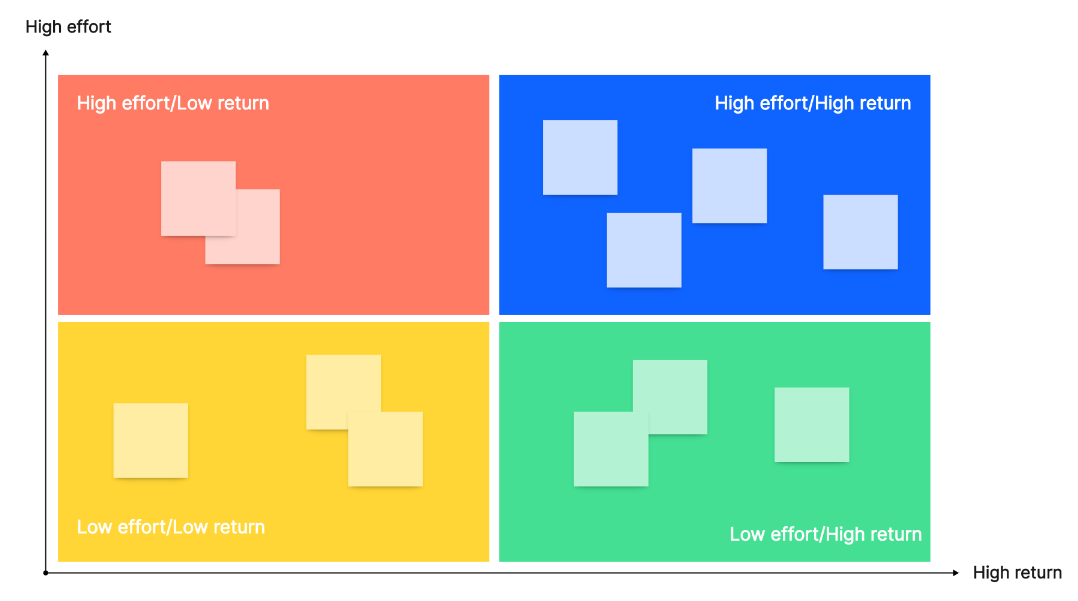In the realm of decision-making and resource allocation, organizations often find themselves grappling with the need to evaluate the financial implications of their choices. Two widely used tools in this regard are Cost-Benefit Analysis (CBA) and Cost-Effectiveness Analysis (CEA). While both methodologies share the common goal of assessing the financial implications of decisions, they differ in their approach, scope, and the type of information they provide. This guide will deeply discuss their differences.
Part 1. Cost-Benefit Analysis (CBA)
Cost-Benefit Analysis is a comprehensive framework used to evaluate the financial feasibility of a project or decision. It involves the comparison of the total costs and total benefits associated with a particular course of action. The key principle behind CBA is to assign monetary values to both the costs and benefits, allowing for a direct comparison.
Key Components of Cost-Benefit Analysis:
1. Monetization of Costs and Benefits: CBA involves converting all costs and benefits into a common unit, typically monetary terms. This allows for a straightforward comparison and decision-making process.
2. Time Value of Money: CBA considers the time value of money, recognizing that a dollar today is worth more than a dollar in the future. Discounting future costs and benefits is a fundamental aspect of this analysis.
3. Net Present Value (NPV): The NPV is a key metric in CBA. It represents the difference between the present value of benefits and the present value of costs. A positive NPV indicates a financially viable project.
Part 2. Cost-Effectiveness Analysis (CEA)
Cost-Effectiveness Analysis, on the other hand, focuses on achieving a specific goal or outcome at the lowest possible cost. Instead of comparing total costs and benefits, CEA measures the efficiency of different interventions by calculating the cost per unit of a desired outcome.
Key Components of Cost-Effectiveness Analysis:
1. Outcome Measurement: CEA emphasizes the quantifiable outcomes achieved by a particular intervention, such as lives saved, diseases prevented, or educational achievements. These outcomes are measured in natural units rather than monetary terms.
2. Cost per Unit of Outcome: The primary metric in CEA is the cost-effectiveness ratio, which expresses the cost incurred for each unit of outcome achieved. For example, the cost per life saved or cost per quality-adjusted life year gained.
3. Comparative Analysis: CEA allows decision-makers to compare the efficiency of different interventions in achieving the same outcome. It provides valuable insights into how resources can be optimally allocated to achieve specific goals.
Part 3. Differences Between Cost-benefit Analysis and Cost-effectiveness Analysis
In this part, we will compare Cost-Benefit Analysis (CBA) and Cost-Effectiveness Analysis (CEA) across various dimensions:
1. Objective:
CBA: The primary objective of CBA is to determine whether the benefits of a project or decision outweigh its costs. It seeks to quantify both costs and benefits in monetary terms for a comprehensive comparison.
CEA: CEA aims to identify the most cost-effective means of achieving a specific outcome. It focuses on measuring the efficiency of different interventions in terms of cost per unit of outcome.
2. Measurement Units:
CBA: All costs and benefits are measured in a common unit—usually monetary terms, allowing for a direct comparison.
CEA: Costs are measured in monetary terms, but outcomes are measured in natural units relevant to the specific goal (e.g., lives saved, diseases prevented).
3. Scope:
CBA: Comprehensive in scope, considering all relevant costs and benefits, even if they are difficult to quantify.
CEA: More focused, assessing the efficiency of interventions in achieving a particular outcome.
4. Time Consideration:
CBA: Involves the consideration of the time value of money, with future costs and benefits being discounted to present value.
CEA: Often considers a shorter time horizon and may not heavily discount future outcomes.
5. Decision Rule:
CBA: A decision is typically based on whether the net present value (NPV) is positive or negative. A positive NPV suggests a financially viable project.
CEA: The decision is based on comparing the cost-effectiveness ratios of different interventions. The one with the lowest cost per unit of outcome is considered more efficient.
6. Applicability:
CBA: Well-suited for large-scale projects with diverse costs and benefits that can be expressed in monetary terms.
CEA: Particularly useful for comparing the efficiency of interventions with specific, measurable outcomes, especially in fields like healthcare and education.
7. Complexity:
CBA: Often more complex due to the need to quantify and monetize a wide range of costs and benefits.
CEA: Generally simpler as it focuses on the cost per unit of a specific outcome, but may still require careful consideration of relevant costs.
8. Flexibility:
CBA: Offers flexibility in considering a broad range of factors, but this can also lead to more subjectivity in the valuation of non-monetary factors.
CEA: More straightforward and focused, making it easier to apply in certain contexts, but may not capture the full range of project impacts.
Part 4. Choosing the Right Tool
The choice between Cost-Benefit Analysis and Cost-Effectiveness Analysis depends on the nature of the decision and the goals of the evaluation. CBA is more suitable for large-scale projects where a comprehensive assessment of costs and benefits is necessary. CEA, on the other hand, is favored when the focus is on achieving specific outcomes with limited resources.
Part 5. How Boardmix Can Help with Cost-benefit Analysis and Cost-effectiveness Analysis?
Boardmix is a groundbreaking online whiteboard platform, providing an extensive array of drawing templates designed to foster effective collaboration, innovative brainstorming, and efficient project planning. As a versatile tool, Boardmix can be utilized in diverse scenarios including but not limited to cost-benefit analysis and cost-effectiveness analysis. Its flexibility makes it an invaluable asset for teams seeking to streamline their processes and enhance productivity while ensuring thorough analysis of costs and benefits.
Key features of Boardmix:
Variety of Templates: Boardmix offers a wide range of templates specifically designed for cost-benefit and cost-effectiveness analysis, making it easier to visualize and compare different scenarios.
Real-Time Collaboration: Teams can work together in real-time on Boardmix, allowing for immediate feedback and discussion during the analysis process.
Easy-to-Use Interface: The platform is intuitive and user-friendly, enabling users to quickly create and modify their analyses without needing extensive training or technical knowledge.
Data Import/Export: Boardmix supports importing data from various sources and exporting your analyses in multiple formats, facilitating easy integration with other tools and reports.
Secure & Private: All data on Boardmix is securely stored and can be made private, ensuring your sensitive financial information is safe.








